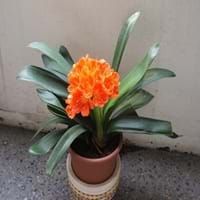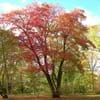Life Span
Annual
Perennial
Type
Tree
Bulb or Corm or Tuber
Origin
Southeastern Asia, Australia
South Africa
Types
Not Available
Not Available
Habitat
Warm and moist climatic conditions
Temperate Regions, Woodlands
USDA Hardiness Zone
9-15
9-11
Sunset Zone
H1, H2, 9, 12, 13, 15, 16, 17, 20, 21, 22, 23, 24
21,22
Habit
Upright/Erect
Clump-Forming
Flower Color
Light Yellow, Light Pink, Ivory
Yellow, Red, Orange
Flower Color Modifier
Bicolor
Bicolor
Fruit Color
Sandy Brown
Red
Leaf Color in Spring
Green, Dark Green
Dark Green
Leaf Color in Summer
Dark Green
Light Green
Leaf Color in Fall
Dark Green
Several shades of Green
Leaf Color in Winter
Dark Green, Plum
Light Green
Leaf Shape
Elliptic
Long Linear
Plant Season
Spring, Summer, Fall, Winter
Spring, Winter
Sunlight
Full Sun, Partial Sun
Partial shade, Full Shade
Type of Soil
Clay, Loam, Sand
Loam, Sand
The pH of Soil
Acidic, Neutral, Alkaline
Acidic, Neutral
Soil Drainage
Average
Well drained
Bloom Time
Late Summer, Early Fall, Fall, Late Fall
Early Spring, Spring, Late Spring, Winter, Late Winter
Tolerances
Wet Site, Pollution, Drought, Soil Compaction
Drought
Where to Plant?
Ground
Container, Ground
How to Plant?
Seedlings
Seedlings, Transplanting
Plant Maintenance
Medium
Medium
Watering Requirements
Get enough water whenever the soil is dry
Water more in summer
In Summer
Lots of watering
Lots of watering
In Spring
Moderate
Moderate
In Winter
Average Water
Average Water
Soil pH
Acidic, Neutral, Alkaline
Acidic, Neutral
Soil Type
Clay, Loam, Sand
Loam, Sand
Soil Drainage Capacity
Average
Well drained
Sun Exposure
Full Sun, Partial Sun
Partial shade, Full Shade
Pruning
Remove damaged leaves, Remove dead branches, Remove dead leaves
Remove damaged leaves, Remove dead branches, Remove dead leaves
Fertilizers
All-Purpose Liquid Fertilizer
fertilize in growing season
Pests and Diseases
Red blotch
Red blotch
Plant Tolerance
Drought
Drought
Flower Petal Number
Single
Single
Fragrant Leaf
Not Available
No
Fragrant Bark/Stem
Not Available
No
Foliage Texture
Fine
Coarse
Foliage Sheen
Matte
Glossy
Attracts
Birds, Hummingbirds
Insects
Allergy
Not Available
Asthma, breathing problems, Itchiness
Aesthetic Uses
Showy Purposes
Beautification, Landscape Designing, Showy Purposes, Used for decorating walls, fences, gates, hedges, etc.
Beauty Benefits
Not Available
Not Available
Environmental Uses
Air purification
Air purification, Food for insects, Prevent Soil Erosion
Medicinal Uses
Antibiotic, Cough, Headache, hemorrhoids, Respiratory Disorders, Rheumatism
No Medicinal Use
Part of Plant Used
Bark, Flowers, Leaves, Wood
Flowers
Other Uses
Used as essential oil
Decoration Purposes, Showy Purposes, Used as Ornamental plant
Used As Indoor Plant
No
Yes
Used As Outdoor Plant
Yes
Yes
Garden Design
Shade Trees, Street Trees, Tropical
Container, Feature Plant, Foundation, Houseplant, Mixed Border
Botanical Name
MELALEUCA quinquenervia
CLIVIA miniata
Common Name
Cajeput Tree, Paperbark Tree, Punk Tree
Clivia
In Hindi
Paperbark tree
Clivia
In German
Paperbark tree
Clivia
In French
Paperbark tree
Clivia
In Spanish
Paperbark tree
Clivia
In Greek
Paperbark tree
κλίβια
In Portuguese
Paperbark tree
Clivia
In Polish
Paperbark tree
Clivia
In Latin
Paperbark tree
Clivia
Phylum
Magnoliophyta
Magnoliophyta
Class
Magnoliopsida
Liliopsida
Order
Myrtales
Asparagales
Family
Myrtaceae
Liliaceae
Clade
Angiosperms, Eudicots, Rosids
Angiosperms, Monocots
Tribe
Not Available
Not Available
Subfamily
Not Available
Amaryllidoideae
Number of Species
Not Available
Not Available
Importance of Paperbark Tree and Clivia
Want to have the most appropriate plant for your garden? You might want to know the importance of Paperbark Tree and Clivia. Basically, these two plants vary in many aspects. Compare Paperbark Tree and Clivia as they differ in many characteristics such as their life, care, benefits, facts, etc. Every gardener must at least have the slightest clue about the plants he wants to plant in his garden. Compare their benefits, which differ in many ways like facts and uses. The medicinal use of Paperbark Tree is Antibiotic, Cough, Headache, hemorrhoids, Respiratory Disorders and Rheumatism whereas of Clivia is No Medicinal Use. Paperbark Tree has beauty benefits as follows: Not Available while Clivia has beauty benefits as follows: Not Available.
Compare Facts of Paperbark Tree vs Clivia
How to choose the best garden plant for your garden depending upon its facts? Here garden plant comparison will help you to solve this query. Compare the facts of Paperbark Tree vs Clivia and know which one to choose. As garden plants have benefits and other uses, allergy is also a major drawback of plants for some people. Allergic reactions of Paperbark Tree are Not Available whereas of Clivia have Asthma, breathing problems and Itchiness respectively. Having a fruit bearing plant in your garden can be a plus point of your garden. Paperbark Tree has no showy fruits and Clivia has no showy fruits. Also Paperbark Tree is not flowering and Clivia is not flowering . You can compare Paperbark Tree and Clivia facts and facts of other plants too.





